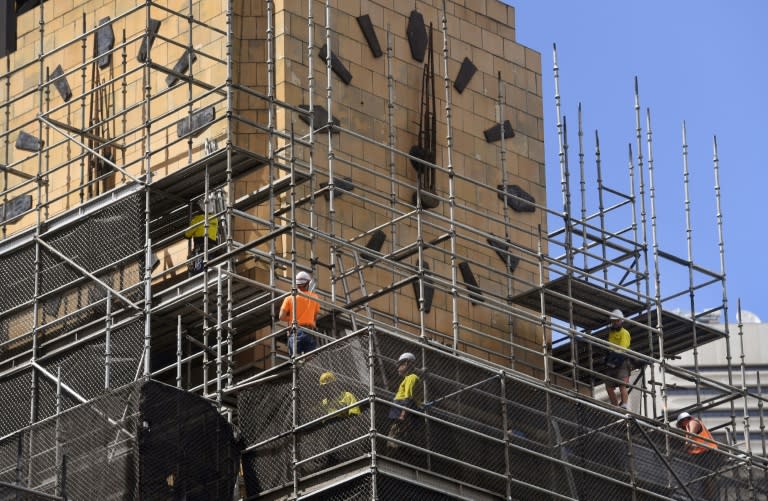Slowing Australia economic growth puts off rate hike expectations
A slowdown in Australia's economic expansion will keep interest rates at a record-low for much of this year, analysts said Wednesday, as net exports weighed on growth even as consumer spending lifted. The economy has avoided recession for more than half a century, but has chartered a rocky path towards non-mining driven growth as an unprecedented resources investment boom unwound. The latest Australian Bureau of Statistics data reflected the mixed picture for the economy, as growth lifted by 0.4 percent in the fourth quarter last year, down from a revised 0.7 percent in the previous three months. The figures showed that annual rate of growth was 2.4 percent, slightly below analysts' expectations and the central bank's forecasts. "The overall numbers have been pulled back by what's been happening with net exports," Treasurer Scott Morrison told reporters in Canberra, adding that Australia needed to "keep fighting for access in international markets". But he struck an optimistic note, saying that beyond the headline figures, the data on consumption, non-mining investment, compensation of employees and profits "indicate a soundness and a strength to the domestic Australian economy". Household spending drove growth in the October-December quarter, increasing 1.0 percent for the period after an upwardly revised 0.5 percent growth in the previous three months. Net exports weighed, detracting 0.4 percentage points from GDP growth. Business investment declined for the quarter, but government investment helped to boost growth, the data showed. - No short-term rate hike - "This now puts the annual rate of GDP growth in the low two percent region," JP Morgan interest rate strategist Henry St John told AFP of the latest figures. "That's notable given the RBA (Reserve Bank of Australia) is forecasting ... that GDP moves back up towards three percent over the coming quarters. It makes it more likely that they'll have to revise that growth forecast." The central bank has not moved interest rates from a record low of 1.5 percent since August 2016 to support growth in non-mining industries, and as inflation remains soft. The outlook for consumer spending is also uncertain despite the jump in the fourth-quarter supported by lower savings ratios, as wages growth continues to be weak and amid high household debt, which has hurt consumption. Reserve Bank governor Philip Lowe said earlier Wednesday he was positive about the outlook for non-mining business spending, with further growth expected this year as "the picture is a better one than it has been for some time". He added that the next interest rate move would be up, but stressed improvements in unemployment and inflation would be gradual. "With only gradual progress expected, the board does not see a strong case for a near-term adjustment of monetary policy," he told a business summit in Sydney before the GDP data was released. Analysts said rates were unlikely to rise until later this year or early 2019. "Looking ahead, the outlook for business investment is better than these figures suggest, but dwellings investment will probably continue to decline and consumption may weaken again soon," Capital Economics' chief Australia economist Paul Dales said in a note. "We doubt the RBA will raise interest rates until late in 2019."



